The bright green foliage of low-growing
Myoporum parvifolium creates splashes of green throughout the landscape. Often used as a substitute for the traditional lawn, myoporum requires less water and a fraction of the maintenance. While this Australian native ground cover cannot tolerate foot traffic, it can be used in place of grass to create the same design effect. Whether grown in a raised bed, on a slope, along steps or in a landscape bed, myoporum is a great choice for landscapes in California and the Southwest, where mild winters are the norm.
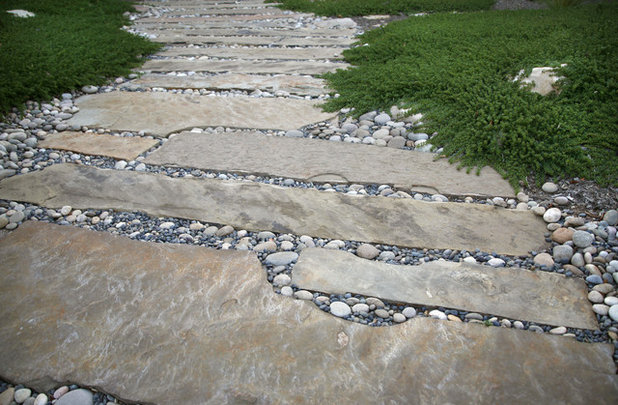
Margie Grace - Grace Design Associates
Botanical name: Myoporum parvifoliumCommon names: Slender myoporum, trailing myoporum, creeping boobialla, dwarf native myrtle
Origin: Native to Australia
Where it will grow: Hardy to 20 degrees Fahrenheit, or minus 6.7 degrees Celsius (USDA Zone 9; find your zone)
Water requirement: Moderately drought-tolerant; water every five days in summer, weekly in spring and fall, and every two weeks in winter
Light requirement: Full sun to partial shade
Mature size: 3 to 6 inches tall and up to 9 feet wide
Benefits and tolerances: Moderately drought-tolerant; attracts bees; firewise; deer-resistant
Seasonal interest: Small white flowers appear in spring and can last into early summer; small purple berries follow
When to plant: Spring or fall
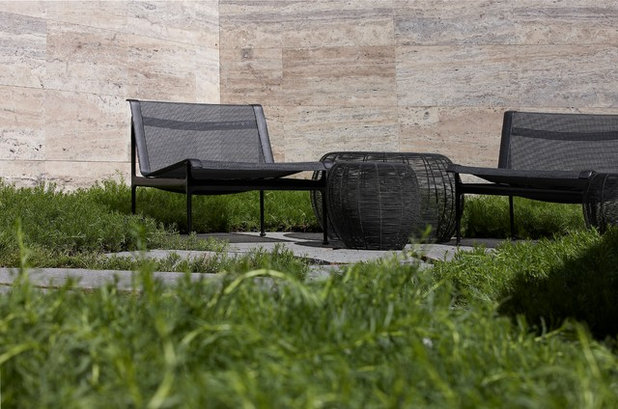
Dean Herald-Rolling Stone Landscapes
Distinguishing traits. Finely textured leaves grow along succulent trailing stems that root wherever they touch bare soil. The leaves are narrow, medium green and approximately a half inch to 1 inch long.
Small white star-shaped flowers appear among the evergreen foliage in spring, which attract bees. The flowers are followed by small purple berries.

Margie Grace - Grace Design Associates
How to use it: - Plant along a slope where its stems will root as they create an attractive green splash of color
- Use as a lawn replacement wherever low-growing, bright green color is desired
- Add around large boulders for contrasting textures
- Place in a tall raised bed where its long green stems can spill over
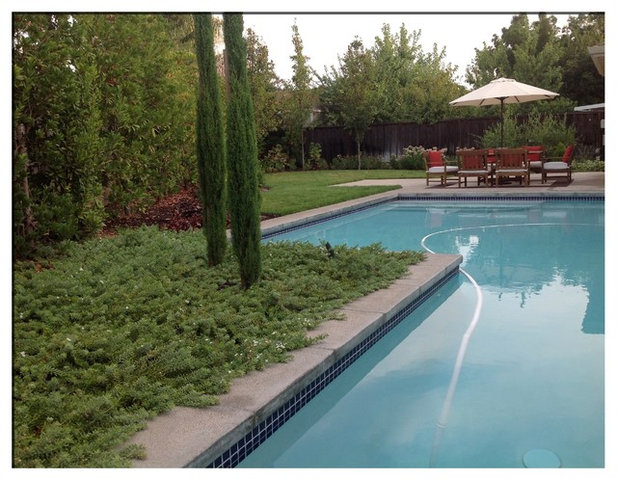
Monica Perrone Landscape Architecture
Planting notes. Space myoporum plants 6 feet apart and plant in well-drained soil. Myoporum will root wherever the stems touch the bare soil, but rooting will be hindered in areas covered in landscape rock, which can keep growth confined to a smaller space.
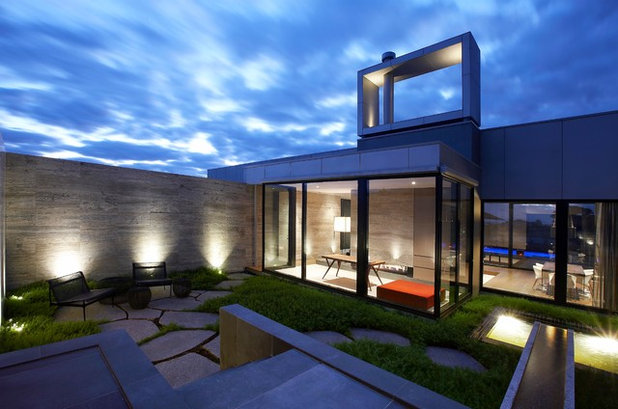
Dean Herald-Rolling Stone Landscapes
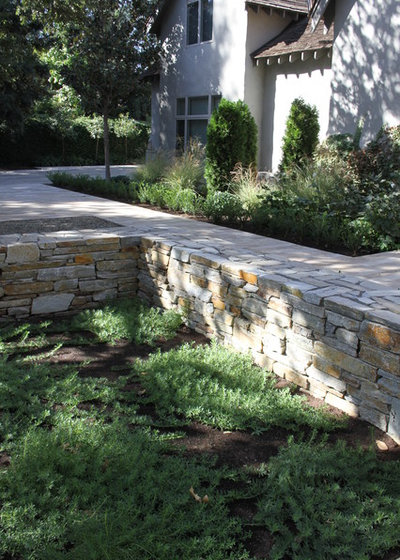
Monica Perrone Landscape Architecture
This evergreen ground cover needs well-drained soil and can be easily pruned to control its size as needed in spring and summer. Myoporum can become woody after a few years, creating bare patches. Younger stems, located toward the plant’s tips, can be rooted and planted in the bare areas. Fertilize in early spring, using an all-purpose fertilizer.
More10 Succulents That Make Pretty, Easy-Care Ground Covers
How to Replace Your Lawn With a Garden





